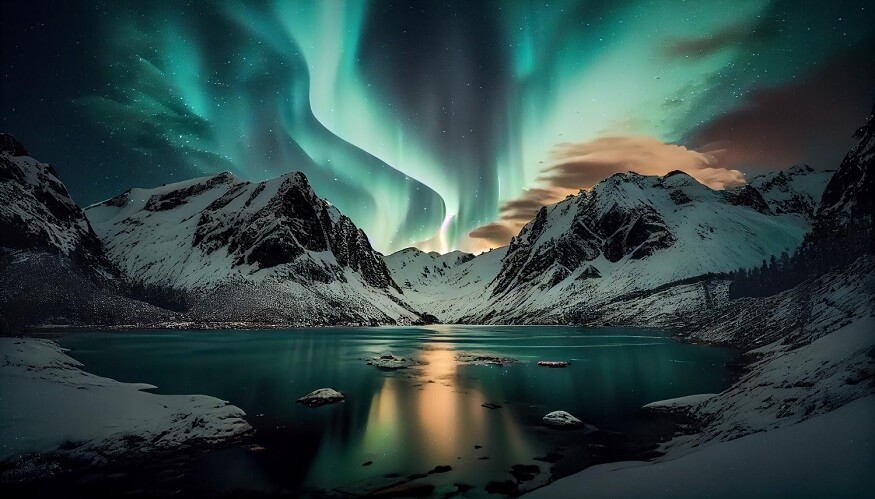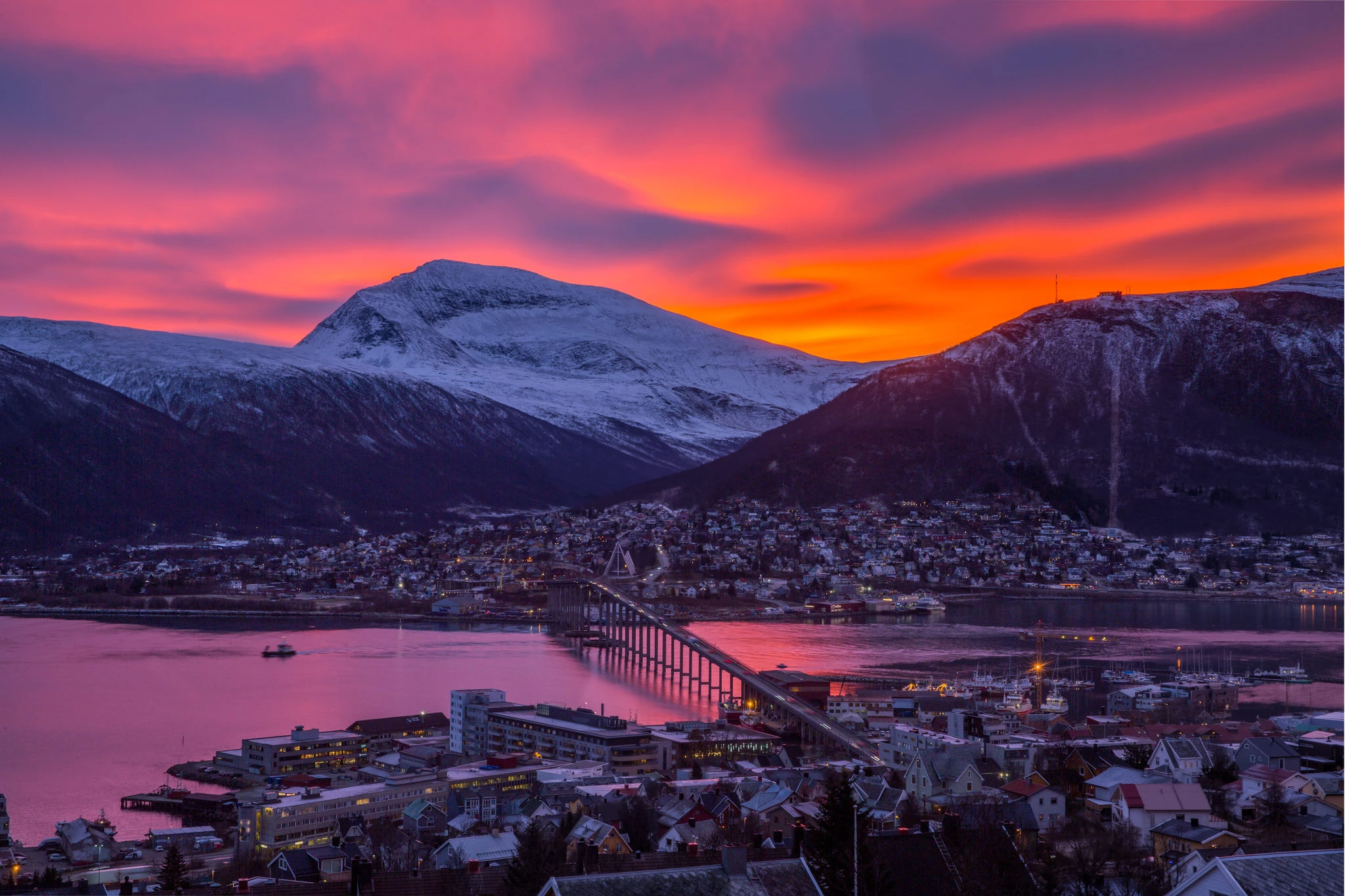The Northern Hemisphere’s aurora Borealis amazing natural light show occurs at particular times of year. The sun’s electrically charged particles clash with oxygen and nitrogen in the Earth’s atmosphere. Brilliant blue, green, pink, and violet hues dance across the night sky, creating a strange experience.
The greatest areas to watch the aurora borealis include clear skies, no light pollution, and no rain. Auroras are best seen in northern latitudes during the gloomy months of September to April. Top viewing areas have aurora tracker websites, and some hotels will wake you up when the lights occur.
Aurora australis, though less well known, appears in Antarctica, Tasmania, and New Zealand. It’s harder to see this show because there’s less land in this region of the earth. However, seeing the aurora australis will reward you with dazzling green, blue, purple, pink, orange, and gold displays.
See the FAQ at the bottom for more on the northern lights. Read on to discover the best places to observe the northern and southern lights.
1. Orkney, Scotland
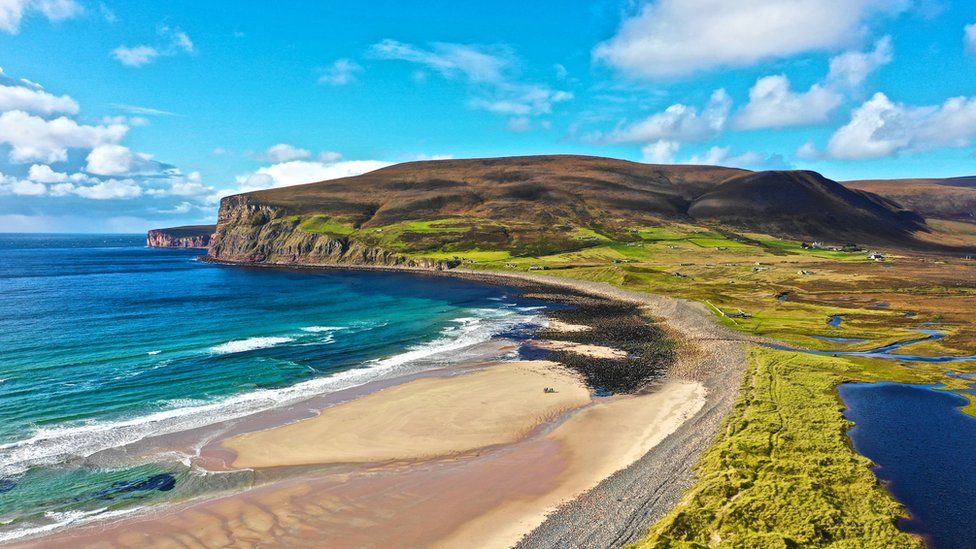
This stunning series of islands 10 miles off Scotland’s remote northern shore is one of the greatest spots to watch northern evenings in the UK. The aurora, known as the “Mirrie Dancers.” in the Shetland dialect, is best seen in fall and winter. The cold, dark evenings of winter make for great viewing if the sky is clear. The amazing light show may be seen at Birsay and Dingieshowe beaches.
In addition to the aurora, Orkney has stunning coastal scenery and countless sheep. Visitors can also explore the UNESCO World Heritage Site, Heart of Neolithic Orkney, with 5,000-year-old monuments. Stay in Kirkwall, the Orkney Islands’ capital, at the Kirkwall Hotel, which has harbor views. See the aurora near town at Inganess Bay and Wideford Hill.
2. Lapland, Finland
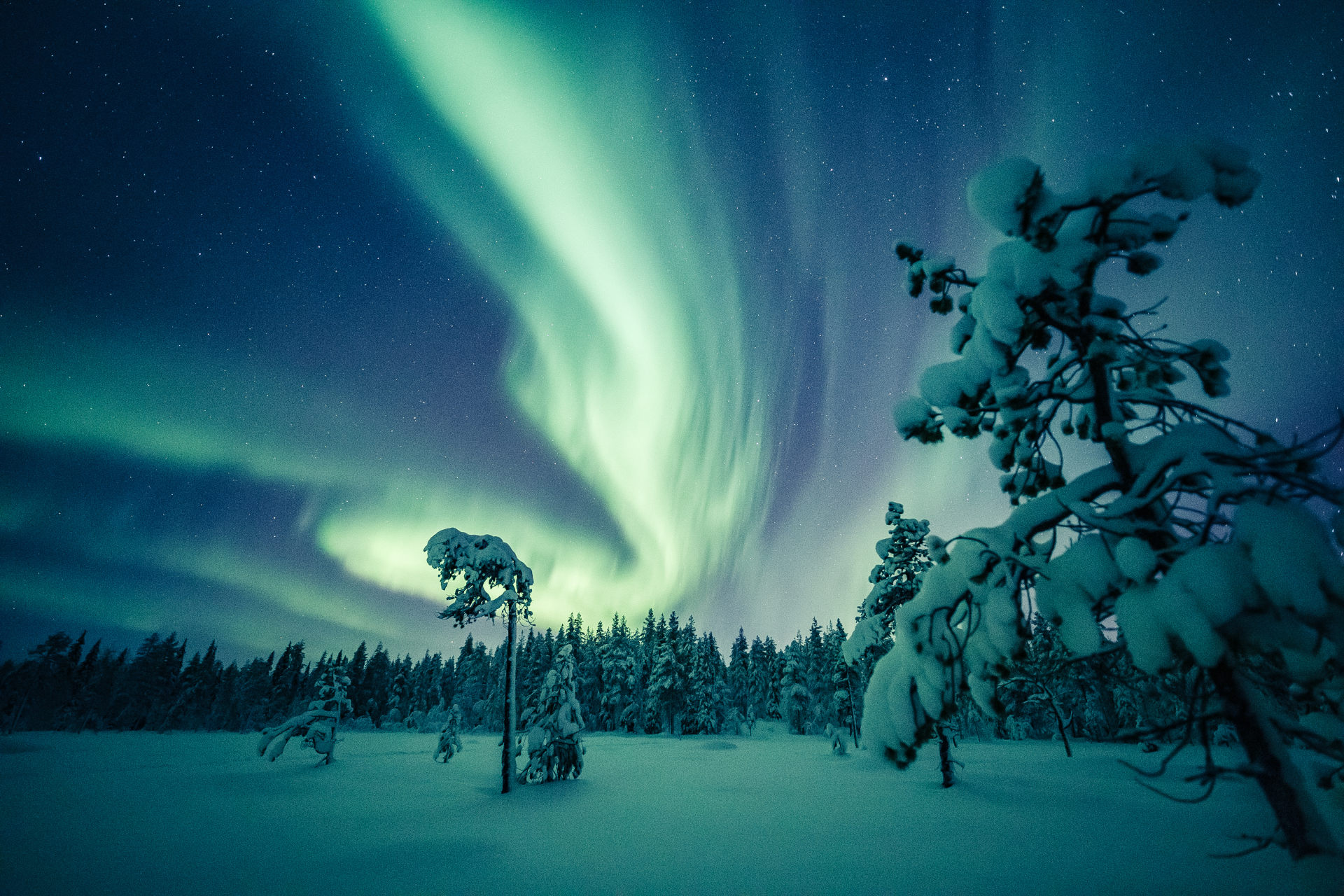
Lapland is Finland’s northernmost Arctic Circle region. Auroras are most visible between August and April, 200 times a year, thus there are numerous chances to see them. The Sámi, the only recognized Indigenous tribe in the EU, 200,000 reindeer, and Santa Claus may be found in Rovaniemi, Finland.
A glass igloo at Santa’s Hotel Aurora in Luosto offers a bucket list light spectacular. This vacation town is 70 miles north of Rovaniemi in Pyhä-Luosto National Park’s hilly topography.
Also, take a reindeer-drawn sleigh ride through the snowy forests for a romantic evening under the stars. Jaakkola Reindeer Farm’s 2.5-hour “Seeking the Northern Lights With Reindeer” sleigh excursion includes a bonfire camp with refreshments, hot drinks, and local fireside stories.
3. Fairbanks, Alaska
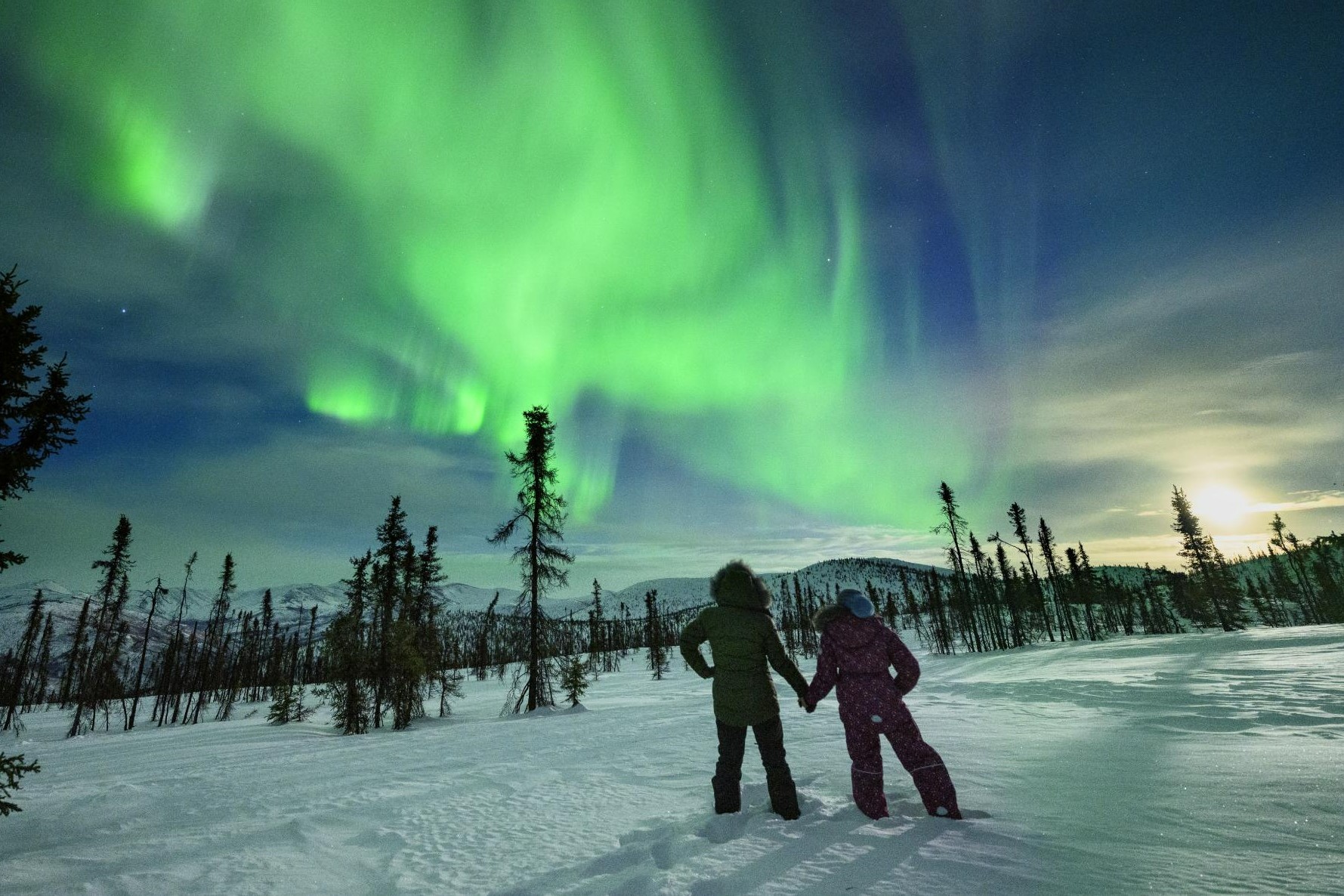
Due to its location under the auroral oval, Fairbanks is one of the best spots to see the northern lights. This ring-shaped zone covers Earth’s geomagnetic North Pole, where auroras occur. From August 21 to April 21, the aurora season offers four out of five clear nights to witness the lights.
Riverboat Discovery rides and gold panning are some late summer attractions. The North Pole Santa Claus House (15 miles southeast of Fairbanks) offers a winter holiday experience. Visitors can also dog-sled or snowmobile or see ice sculptures at the World Ice Art Championships in February and March.
Book a private igloo at Borealis Basecamp, a premium glamping resort on 100 secluded acres of boreal woodland 30 miles from Fairbanks, for outstanding aurora watching. Chena Hot Springs Resort offers northern lights tours from its springs and spas. Round-trip transportation from town to the resort, a hot spring soak, an Aurora Ice Museum visit, and an aurora viewing tour with hot refreshments are included.\
One of the best places to see the northern lights in Norway is Tromsø, situated 220 miles above the Arctic Circle. Despite twilight, the sun doesn’t rise in this northern section of the country throughout the darkest period of the aurora season (September to March). This severe darkness increases aurora viewing.
Visit the Arctic Cathedral in Tromsø, a vibrant city with plenty to do besides sky-gazing. The city hosts the multiday Northern Lights Festival in late January to early February, showcasing a range of musical styles.
Aurora hunters can observe the lights on their own in town, but Arctic Circle Tours’ guided outings or husky trekking expeditions in the Arctic tundra offer a superior perspective. Book a harbor-view Scandic Ishavshotel room for multiple days.
5. Jukkasjärvi, Sweden
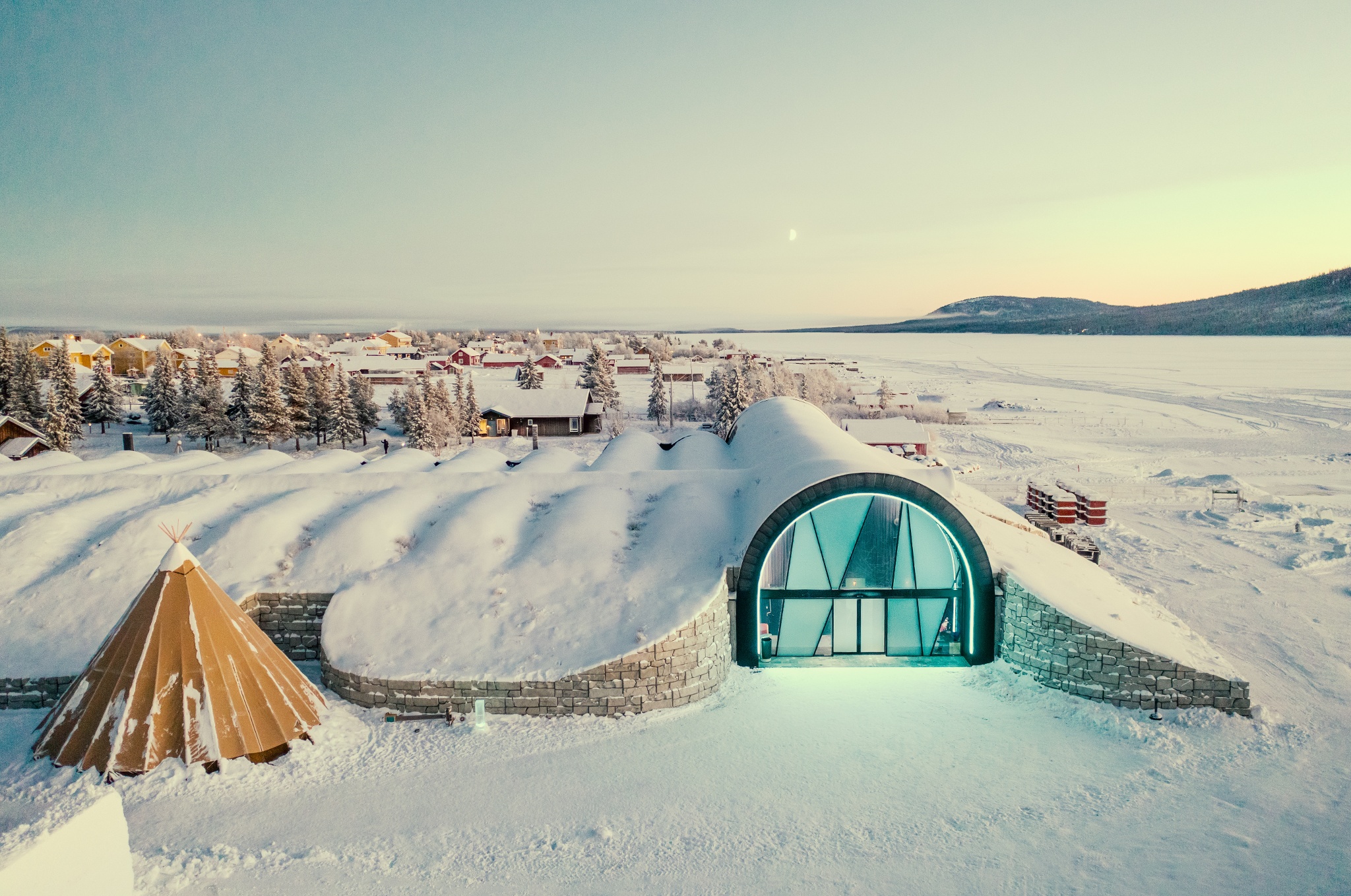
Swedish Lapland’s lit skies are best seen between early September and late March. Aurora viewing is great in Jukkasjärvi, a small Swedish town on the Torne River 125 miles above the Arctic Circle. Some of the village’s 17th-century homesteads, including a timber cottage, remain. Over 1,000 dogs and 800 residents live in the town.
Icehotel 365, the world’s first permanent ice hotel, offers cold overnight stays. Artist-designed ice suites with unique themes maintain temperatures at minus 5 degrees Celsius (23 degrees Fahrenheit). Reindeer skin beds and heated sleeping bags are available in the rooms. Enjoy a snowmobile northern lights tour or an Icelandic horse-mounted moose safari while at the resort.
6. Yellowknife, Canada
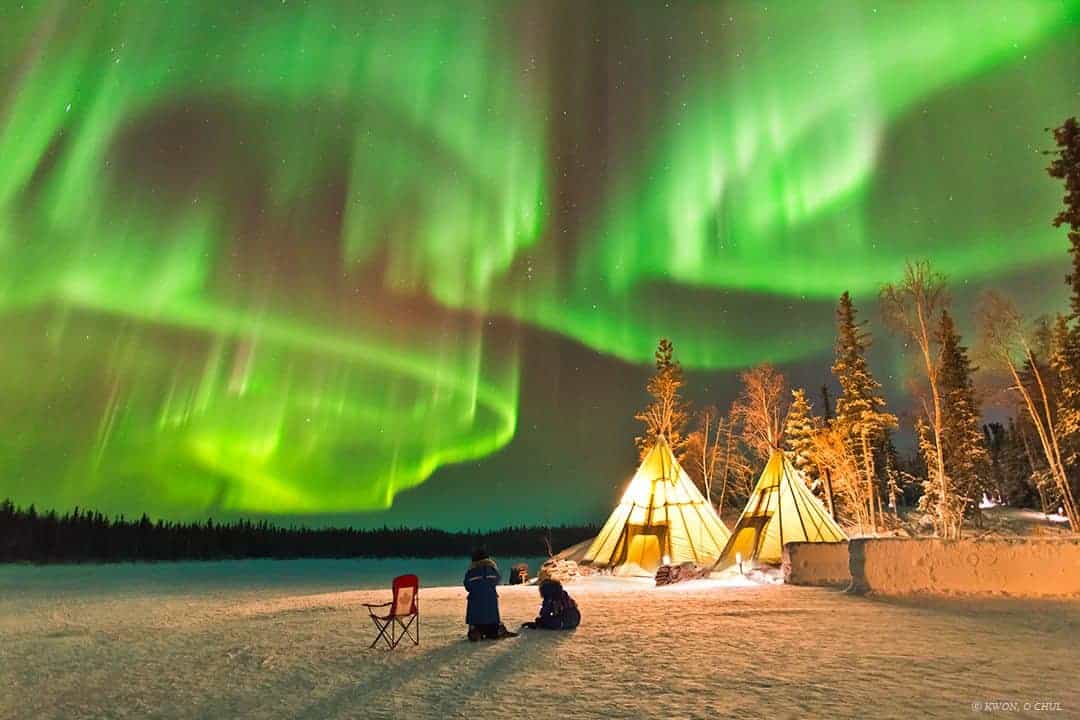
Yellowknife, the Northwest Territories’ capital, is called the “Aurora Capital of North America.” The city puts on one of the world’s most awe-inspiring light shows from mid-November to early April when the aurora is best seen. Up to 240 days a year, the aurora can be seen from late summer to early fall.
Ice fishing and cross-country skiing are available in Yellowknife, on Great Slave Lake’s northern side. The monthlong Snowkings’ Winter Festival in March includes a snow-carving competition, an ice slide, a snow castle, live music, and more.
Aurora Village tours and packages provide a unique way to see the lights. You will be picked up from your hotel and taken to the property, where you can stay warm in a tent while drinking hot drinks. Aurora Village, owned by Aboriginals, offers dog-sledding and snowshoeing.
7. Reykjavik, Iceland
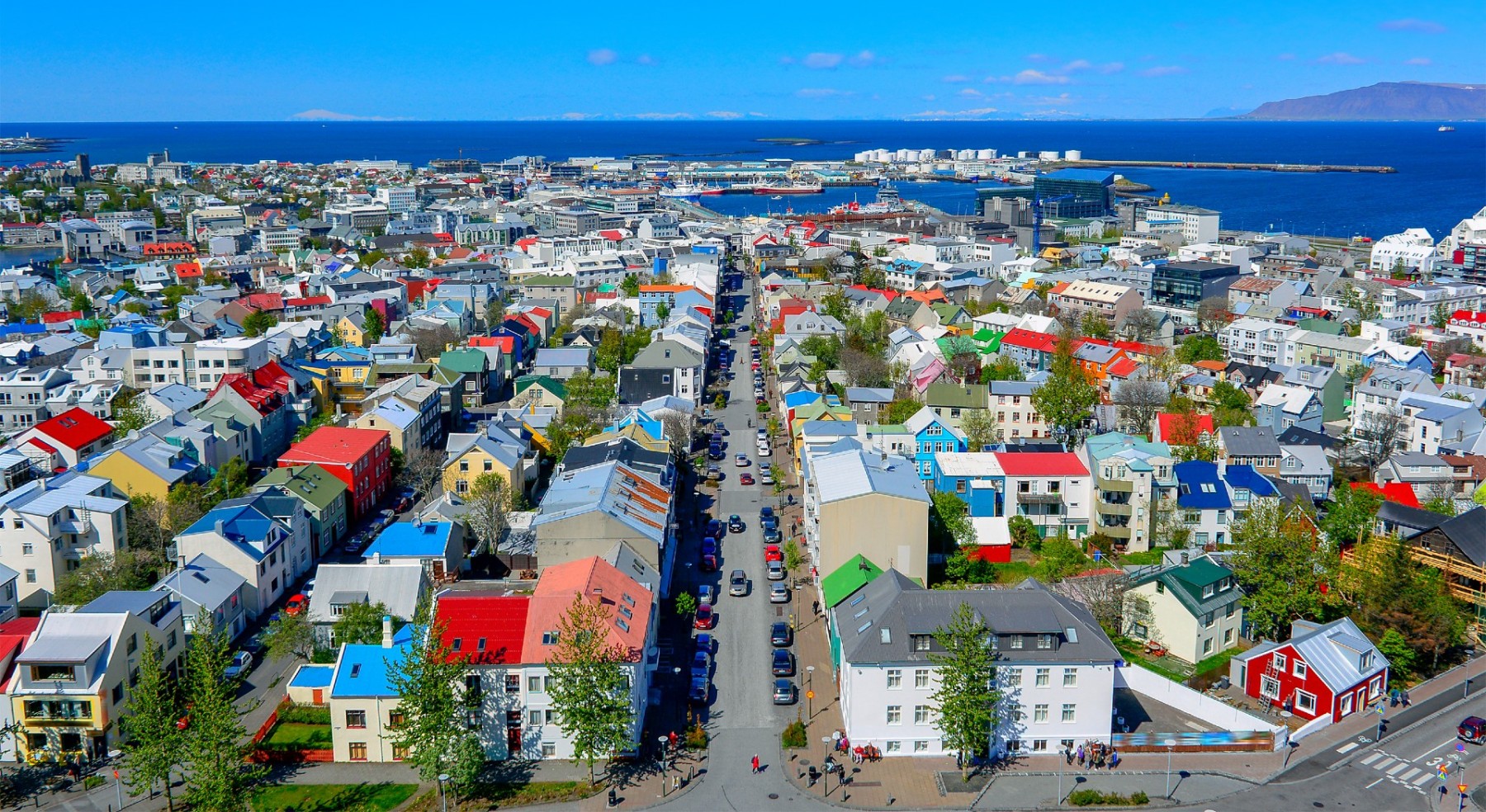
In Iceland, the aurora borealis is best seen from October–March. In Reykjavik, the capital city, you may stay, eat, and see the show during the long, gloomy winter. Go to Öskjuhlið for the best aurora viewing without light pollution. The nocturnal performance may be seen from walks and paths in this wooded and hilly Reykjavik neighborhood 200 feet above sea level.
Perlan, Iceland’s sole planetarium and museum, is situated on top of this woodland. A glacier exploratorium and the first indoor ice cave are also in Perlan. Visitors can enjoy city views from the building’s fourth-floor observation deck. You can see the Snaefellsjökull glacier, Keilir, a volcanic mountain, and Esja, Reykjavik’s mountain, from here.
Spend an overnight with Buubble Tours in Reykjavik. Visit many attractions and spend a night in a bubble at the 5 Million Star Hotel under the northern stars.
8. Viking Ocean cruise along Norway’s coast
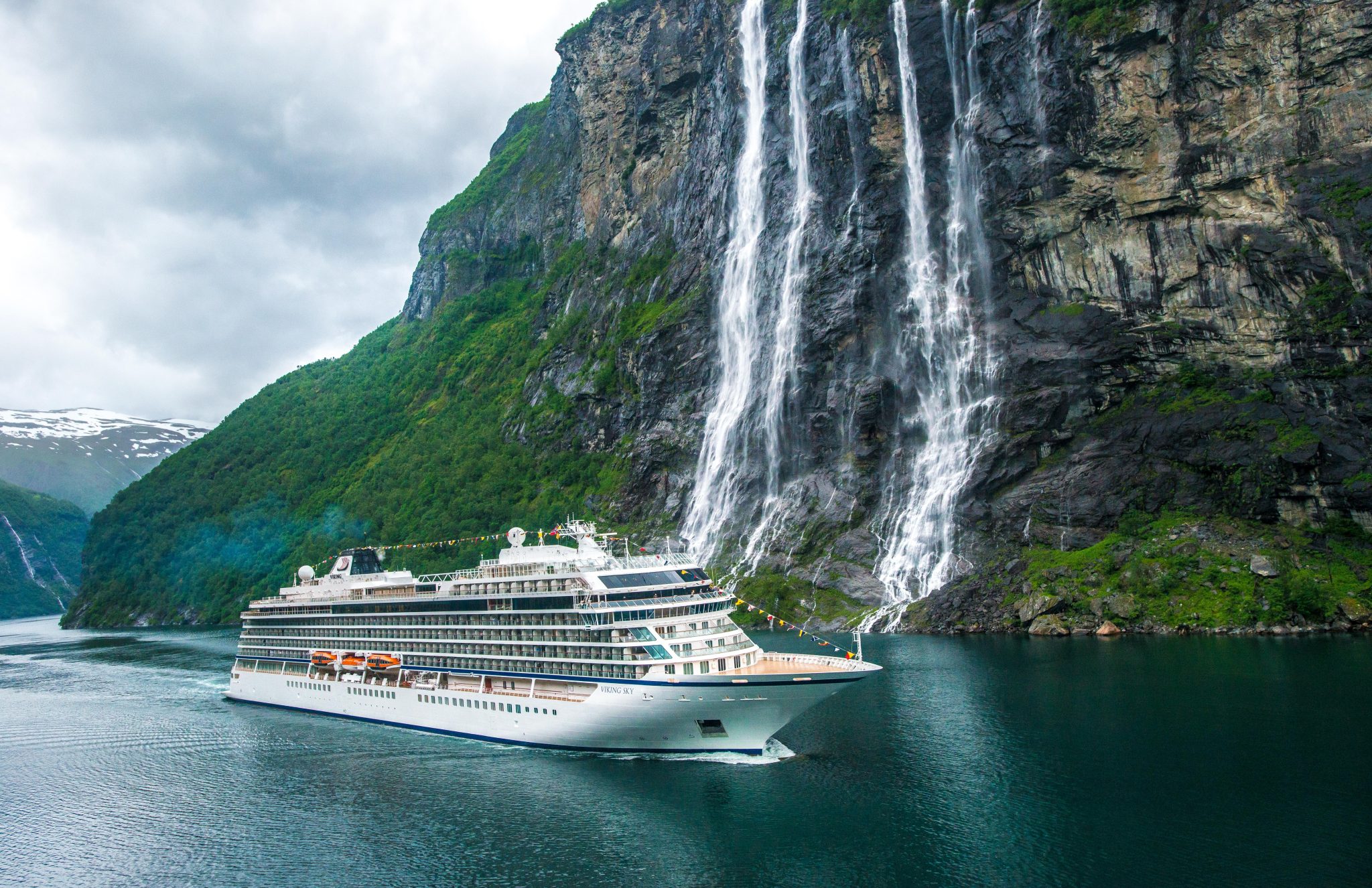
Experience the aurora in northern Norway by sailing to the Arctic Circle in winter. This 13-day voyage from London to the North Sea includes stops in prime aurora-viewing destinations like Tromsø, Alta, and Narvik. The cruise ends at Bergen.
On land, enjoy the snow-covered landscapes and book bucket list activities like igloo stays and reindeer sledding. You can also snowmobile, dog-sled, or watch the lights from a Sámi tent on the mountain.
9. Headlands International Dark Sky Park, Michigan
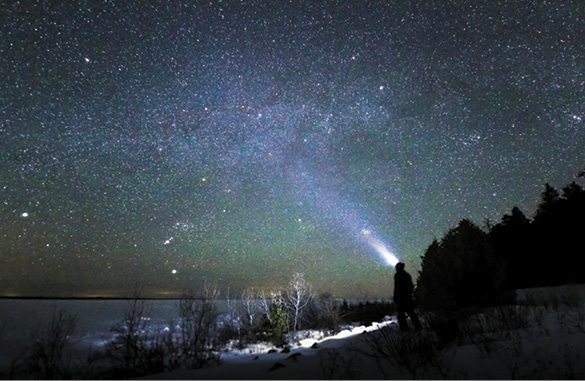
Headlands International Dark Sky Park, on Michigan’s lower peninsula, is less than 5 miles from Mackinaw City and one of the best places to watch the aurora. The northern lights are tougher to forecast due to their southern location, but the ideal time to observe them is in spring and fall. Park officials recommend facing north after midnight to see the spectacle. You can check the park’s online Clear Sky Chart for weather before you go.
Headlands offers various stargazing throughout the year. Visitors can see the Milky Way and watch meteor showers in late summer. Mission Point Resort on Mackinac Island is a must-stay between late April and October. From biking to swimming, this historic Lake Huron property offers outdoor activities.
10. Nellim, Finland
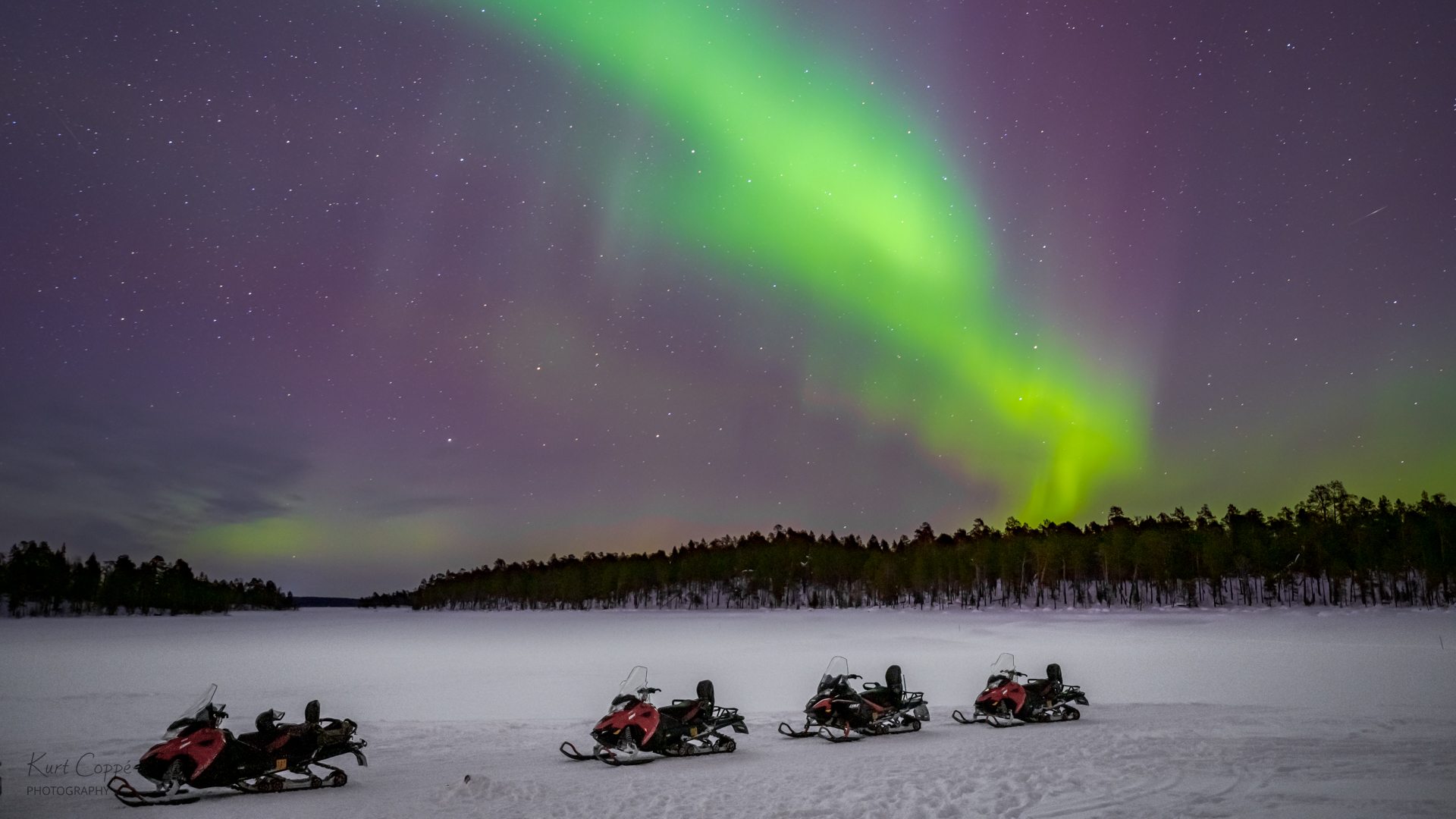
Due to little light pollution, this remote Arctic resort in Finnish Lapland less than 10 miles from the Russian border is a top northern lights viewing spot. The ideal months to visit are December–March.
An ideal base for exploring the region, the Nellim Wilderness Hotel offers year-round activities, including aurora-chasing expeditions. Visitors can drive, a snowmobile, or snowshoe to witness the aurora. Take a snow sled to a campground on Lake Inari, one of the world’s top aurora viewing spots, with no light pollution.
The property has rooms, suites, and villas. The Nellim Wilderness Hotel has log cabins, bubble-shaped accommodations for two, and aurora-focused “kotas” (inspired by Sámi huts) where guests may enjoy the dancing lights from their comfortable mattresses. Aurora Bubbles has a glass ceiling that overlooks the night sky above the bed. Husky safaris, ice fishing, snowmobile, and reindeer encounters are some Arctic activities to try when not chasing the lights.
FAQ’s
Q1. What are the Northern Lights, and why are they visible in certain locations?
Solar charged particles interact with Earth's magnetic field to create the Northern Lights, or Aurora Borealis. In high-latitude regions, especially near the magnetic poles, they create beautiful night sky displays.
Q2. How were these locations selected as the "best" for Northern Lights viewing?
These locations offer clear Aurora Borealis views due to their optimum positioning. Low light pollution, accessibility, and favorable tourist ratings also influenced their choice.
Q3. When is the best time to see the Northern Lights at these spots?
The Northern Lights are visible from late September to early April in winter. Check each location's peak aurora months for particular time.

